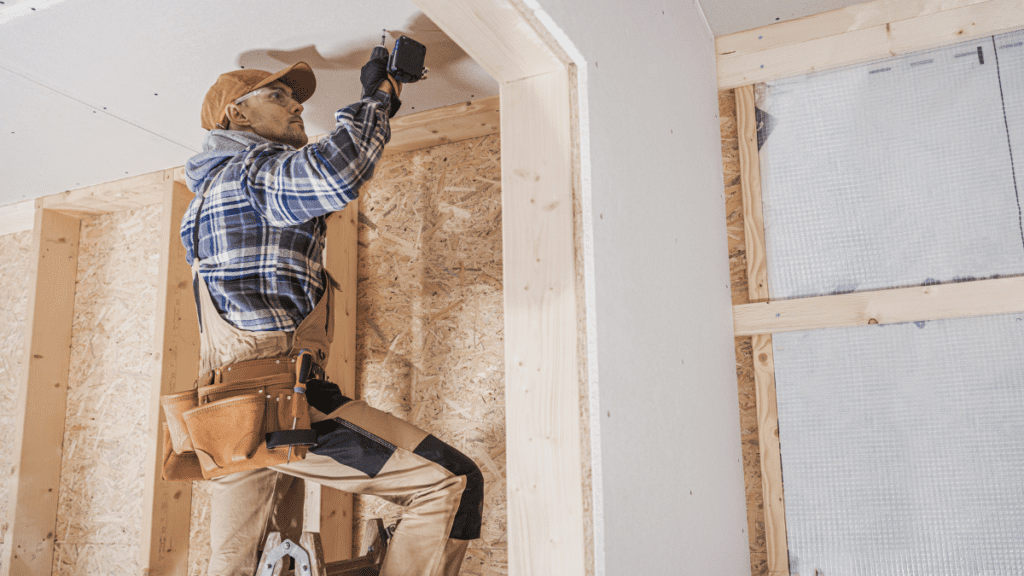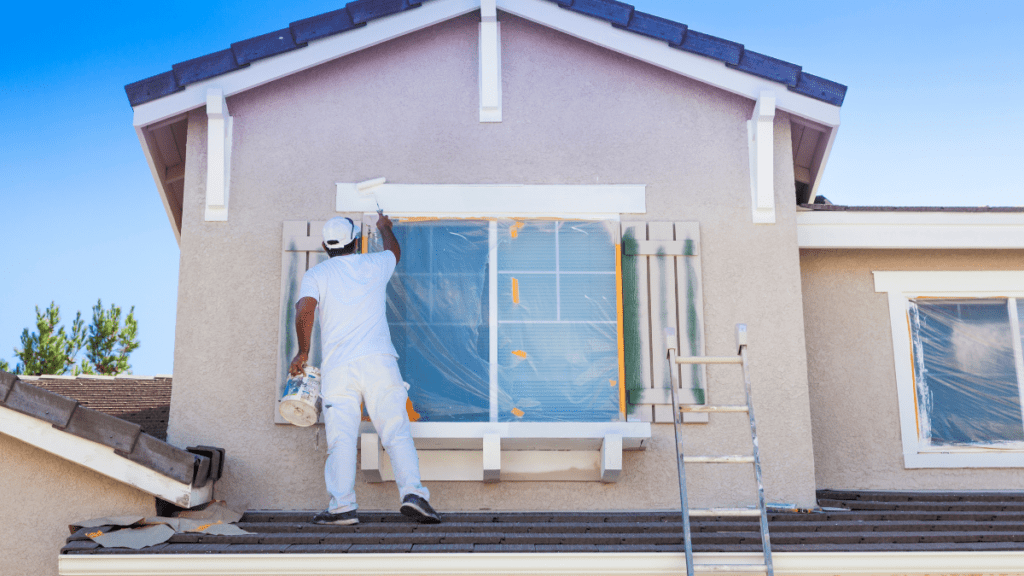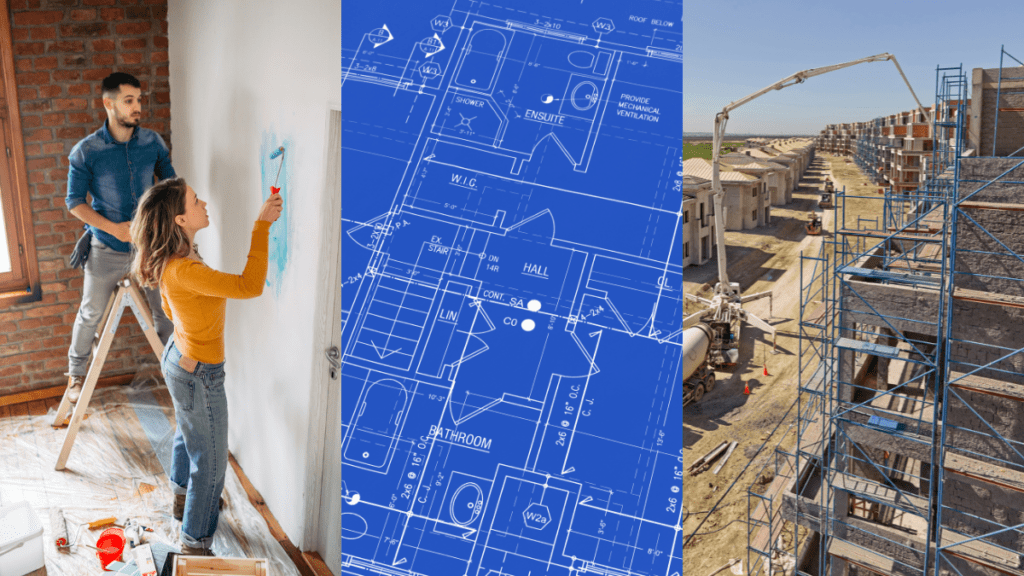Last Updated: March 2024

Building materials are the generally more raw materials used in rental real estate construction – e.g. wood, sand, wires, cement, pipes, etc. They are different from building products as they are usually more un-finished in nature. Below we take a deep dive into everything you need to know about building materials for rental real estate.
10+ Main Types of Building Materials
Building materials are generally include raw materials such as wood, wires, sand, pipes, cement, etc. They differ from building products in nature by usually being more un-finished in nature. Below is a list of some of the most common types of building materials.
Concrete/Masonry
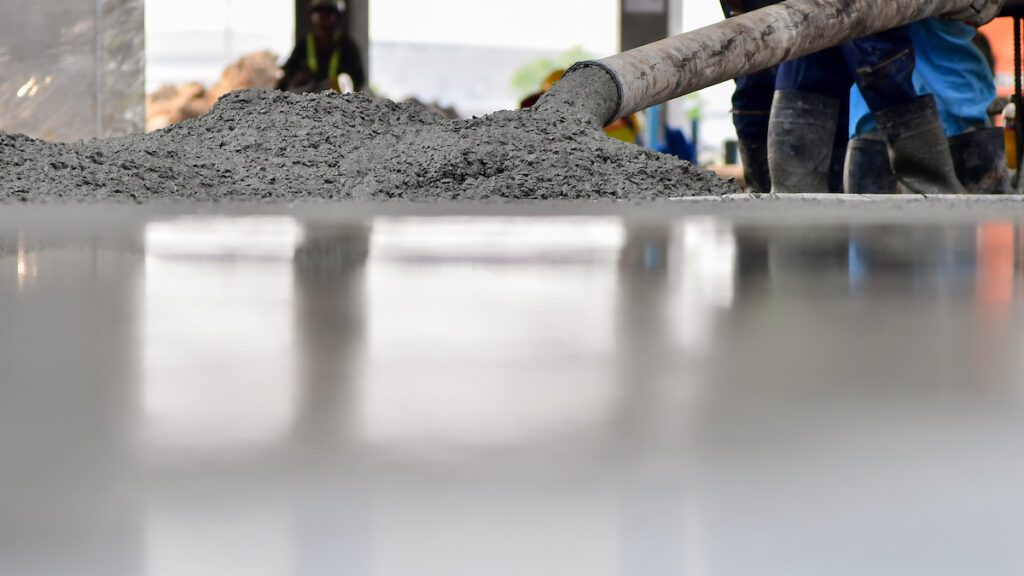
Concrete and masonry refers to building materials that are generally used in exterior or foundational applications. Concrete can often be found in building foundations and exterior pathways such as walkways and vehicle driveways. Masonry refers to the bricks, stones, and blocks found either on the facade of a building, or throughout the property grounds. These building materials are typically made up of a mixture of cement, sand, and other minerals mixed together with water.
Drywall
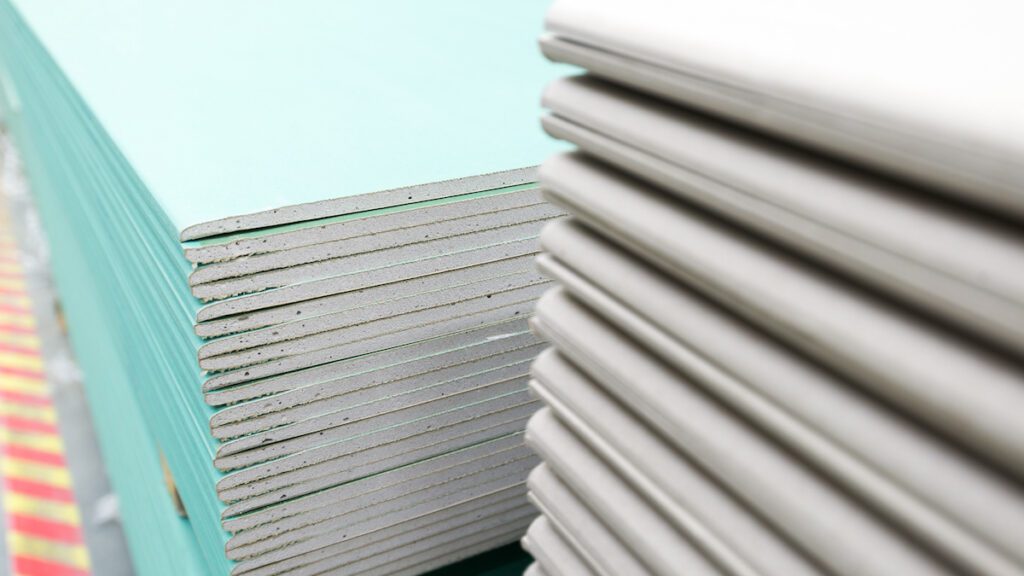
Drywall is a material commonly used to create walls and ceilings within many North American residential and commercial properties. It is made of a white power mineral called Gypsum, that is pressed together between 2 sheets of thick paper. The finished product is usually 4 feet tall by 8 feet wide sheets. Drywall gained widespread use in North America as a time and labor saving alternative to the previous method of wall building called Lath and Plaster.
Insulation

Building insulation can take many forms. It is commonly used to help control the climate within a structure for either keeping the interior cool (heat prevention) or keeping the interior warm (heat preservation). The most common form of insulation found among North American buildings is fiberglass or mineral wool batts (i.e. sheet). These sheets are sandwiched inside of a building’s walls between interior-drywall and the external-facade. Insulation effectiveness is rated on it’s R-Value, where a higher R-Value equals greater its effectiveness. A properly insulated structure can greatly reduce heating and cooling costs regardless of the type of thermostat or HVAC unit it has.
Electrical

Electrical supplies in rental properties encompass a range of vital components, including wiring, outlets, switches, and panels. Safe and efficient wiring systems are paramount, with choices needing to balance safety, cost, and ease of maintenance. Understanding the latest electrical panels and circuit breakers is also essential, as they must meet safety standards and building codes. Energy-efficient options are increasingly important for cost-effective property management and environmental sustainability.
Exterior Finishes
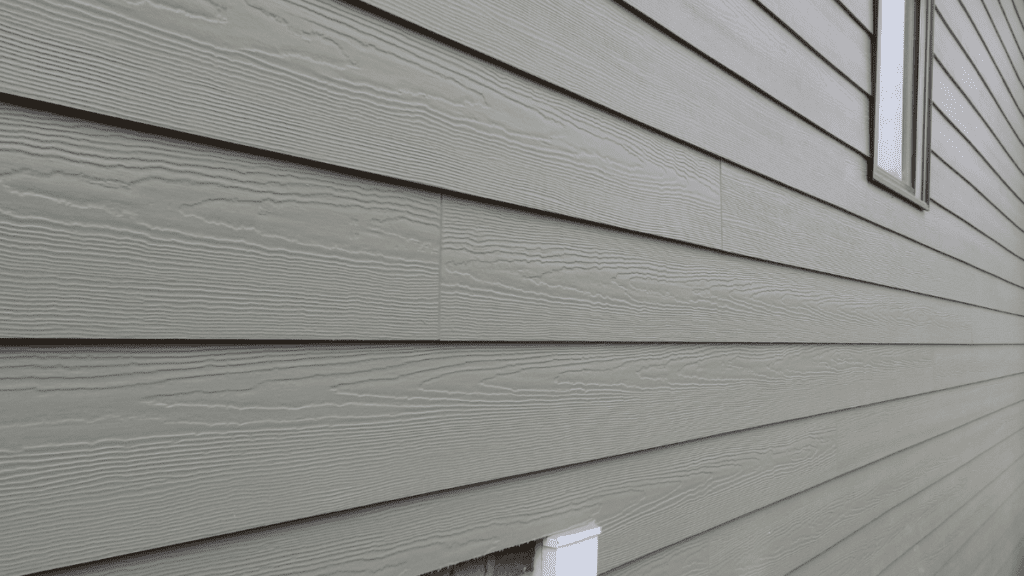
Different siding and exterior finish materials, such as wood, vinyl, and stucco, offer various aesthetic and practical benefits for rental properties. These materials not only enhance curb appeal but also come with varying levels of maintenance needs and durability. Selecting the right siding and finishes is vital in protecting the investment and ensuring the property remains attractive and weather-resistant over time.
Flooring
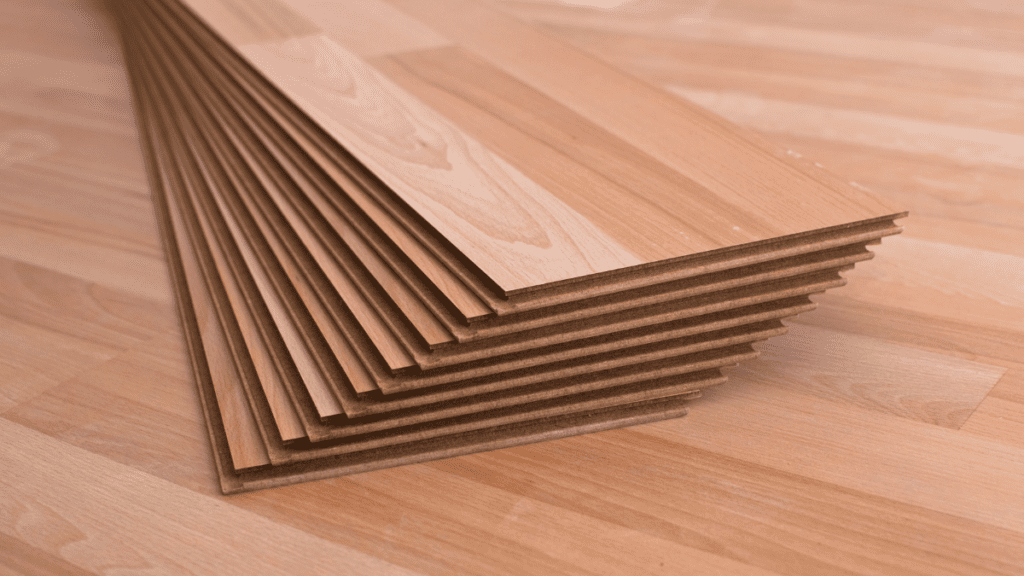
Flooring is a building material that can be found in virtually all types of rental properties. There are a different variety of materials, including hardwood, tile, carpet, luxury vinyl, and more, which each offer advantages and disadvantages in terms of longevity, maintenance, and tenant appeal. Choosing the best type of flooring for a rental property should be based on a balance initial investment with long-term value to ensure practicality and attractiveness.
Lumber
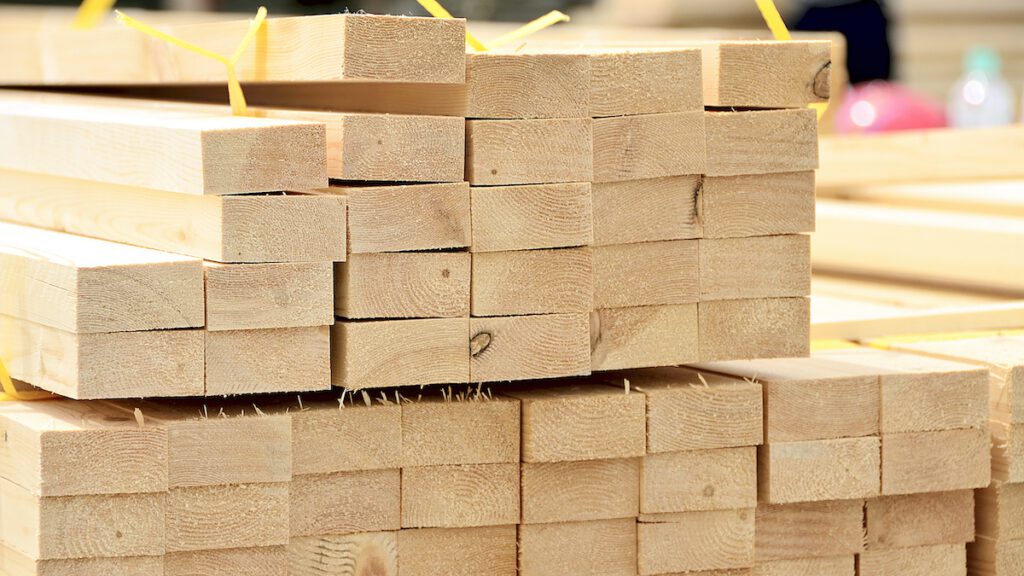
Lumber refers to wood that has been processed into standardized sizes and shapes to be used primarily for structural purposes. Common types of lumber include Dimensional Lumber, Plywood Sheets, and Sheathing. Engineered lumber is also commonly used in construction as a derivative of wood that is cross-laminated for additional strength. Lumber varies greatly by type and its intended application within the overall building construction process.
Landscaping

Landscaping plays a pivotal role in enhancing the outdoor appeal of rental properties. Materials like mulch, decorative stones, and pavers are key in creating inviting and manageable outdoor spaces. Choosing the right landscaping materials involves considering their durability, aesthetic appeal, and maintenance requirements. Sustainable landscaping practices are also important for their environmental benefits and potential to increase property value. Installing landscaping can be done DIY or you can hire a landscaper that specializes in rental properties.
Metal

Metal is a broad term that describes all solid materials that are malleable and conductive. The most common type of metal used in construction is steel. Steel is a semi man-made building material that’s made by mixing iron and carbon together. Its high strength-to-weight ratio makes steel a preferred building material to use when a structure needs to support a significant amount of weight. Similar to steel support beams often found in framing, commercial properties often use metal studs to build walls for their resilience to termite or mold damage.
Plumbing

Plumber materials are a vitally important component to understand when it comes to rental property construction. Options like PVC, copper, and PEX pipes each offer unique advantages and maintenance needs. The selection of these materials can significantly impact water efficiency and noise control in rental units. Furthermore, modern plumbing fixtures and fittings play a key role in balancing functionality with aesthetic appeal, while also considering long-term durability and maintenance costs.
Roofing
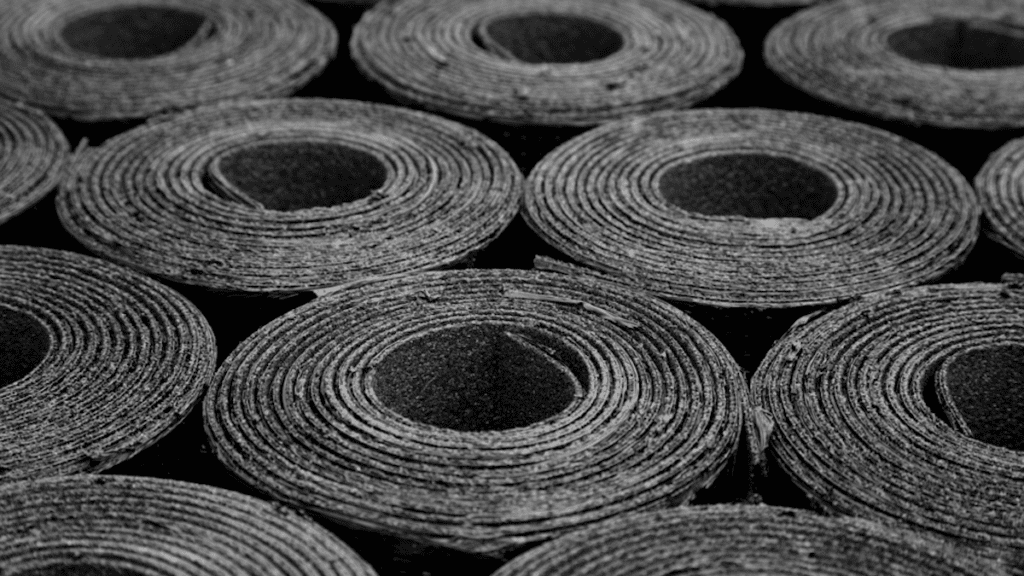
Most North-American roofs are made up of 2-parts. A lower layer called an underlayment, and a top layer that’s exposed to the elements such as shingles. These 2 materials combined, work together to provide a waterproof barrier to protect the structure below. An underlayment is commonly a roll of black asphalt or felt paper. The top layer can vary depending on location and style preference. They typically can be asphalt shingles, clay or tile, slate, metal, wood, and more.
Wall Coverings

Different types of paints and wall coverings can significantly influence the appearance and durability of rental properties. Options include washable paints ideal for high-traffic areas and various stylish wallpapers that add character. The longevity and maintenance of these choices are critical, especially in rental settings. Additionally, eco-friendly and low-VOC paint options are gaining attention for their reduced impact on indoor air quality and tenant health.
Building Material Suppliers
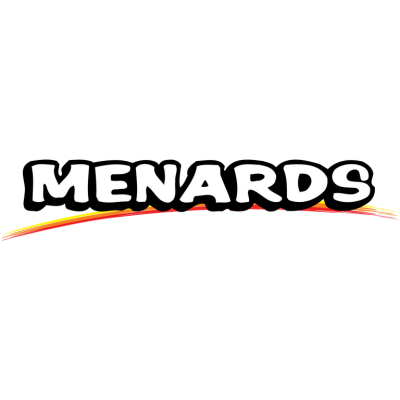

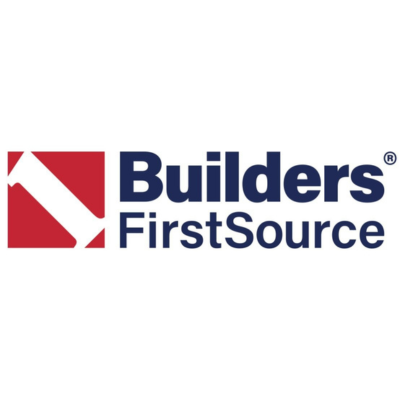

Building materials are bought at supply vendors that include warehouse home improvement stores, online retailers, local hardware stores, and supply warehouses. Small amounts of building materials can be bought at local home improvement stores such as The Home Depot, Lowe’s, and Menards. Larger amounts of materials are usually bought at supply warehouses that have large amounts of materials onsite for sale.
Rental Property Building Products

Looking for building products like rental property toilets or apartment kitchen faucets? Check out our ultimate list and guide to selecting top rated building products for rental properties.
The #1 Rental Property Newsletter
Once a month, we send out an exclusive Rental Property Market Update with top stories, current mortgage rates, building products, and more. No spam and unsubscribe anytime.


Rental Property Building Material FAQ
What are Building Materials?
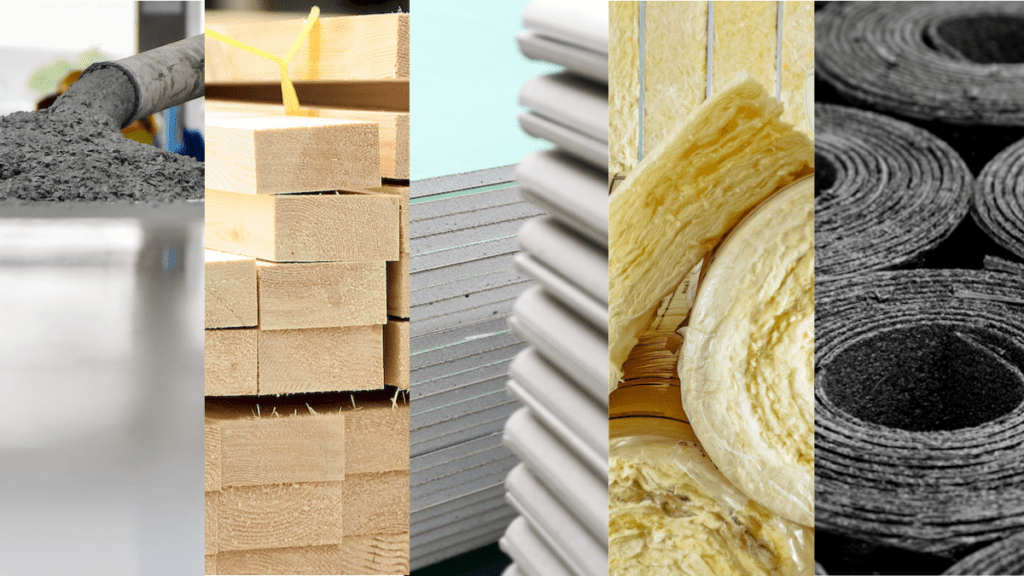


Building Materials, also called Construction Materials, are the individual unfinished natural or man made materials that are collectively used to construct a building. They are frequently used throughout the process of constructing or remodeling a rental property.
How to Determine Building Material Prices?
The price of building materials is tied to a variety of factors that all make up the end user market price that you will pay for a product. Natural products such as cement and lumber pricing usually depend on the input costs to source, finish, and transport. If there is a disruption in the sourcing or transportation of the product, that could affect pricing. Supply and demand also play an important role in the price of building materials. When a lot of building is going on, material prices will usually go up. When building slows down, building material prices usually go down.
How to Buy Building Materials?
When buying building materials it is important to keep a few things in mind. Consider the following 3 steps to ensure a smooth building material buying experience:
- Plan in advance what you need and where to get it. The more you plan in advance, the more time you can save.
- Check prices and availability at your local suppliers. You might be surprised that the material you need may not even be available nearby or significantly more expensive than you might have thought.
- Ensure that you have the proper car to transport the building material for your landlording endeavors. Transporting 20 foot lumber beams or tractor scoops of raw cement requires a heavy duty truck or trailer.
What Makes Building Materials Durable?
Durability is a factor to greatly consider when selecting building materials. In different parts of the world, different materials are used based on durability to the local climate. Areas that see a lot of snow and harsh weather will utilize more durable materials such as cement and steel. Other areas that see mostly mild weather often use less durable materials such as wood. Keep in mind that more durable materials usually cost most. It would be cheaper to build a house out of wood, as opposed to cement and brick.
More Rental Property Construction Guides
About the Author


Ryan Nelson
I’m an investor, real estate developer, and property manager with hands-on experience in all types of real estate from single family homes up to hundreds of thousands of square feet of commercial real estate. RentalRealEstate is my mission to create the ultimate real estate investor platform for expert resources, reviews and tools. Learn more about my story.
Disclaimer: The information provided on this website does not, and is not intended to, constitute legal and/or financial advice. As such, all information, content, and materials available on this site are for general informational purposes only. Please review our Editorial Standards for more info.

